CSS Crash Course for Beginners -1
by Nabendu Biswas / July 17th, 2020
#css #beginners #webdev
Series: CSS-Basics
Welcome to another beginners course specially targeted at people, who want to start with web-development. You should first learn about HTML, before moving to CSS. You can find my HTML series here.
CSS is known as Cascading Style Sheets and is used to style websites. Without CSS, the websites look really ugly. CSS is also considered right-brain means mostly artistic and developers tends to struggle in it. This tutorial is meant to teach the syntax of CSS and basic stuff and not the latest trends.
Adding CSS
Now, there are three ways to add CSS to your html file. They are -
Inline CSS: Directly in the html element.
Internal CSS: Using
<style>tags within the html file.External CSS: Linking an external .css file.
Now, let’s see all this in action. Create a folder CSS_Basics in your computer and open it with VSCode. Create a file index.html inside it.
VSCode have emmet pre-installed, so just give ! and press tab.
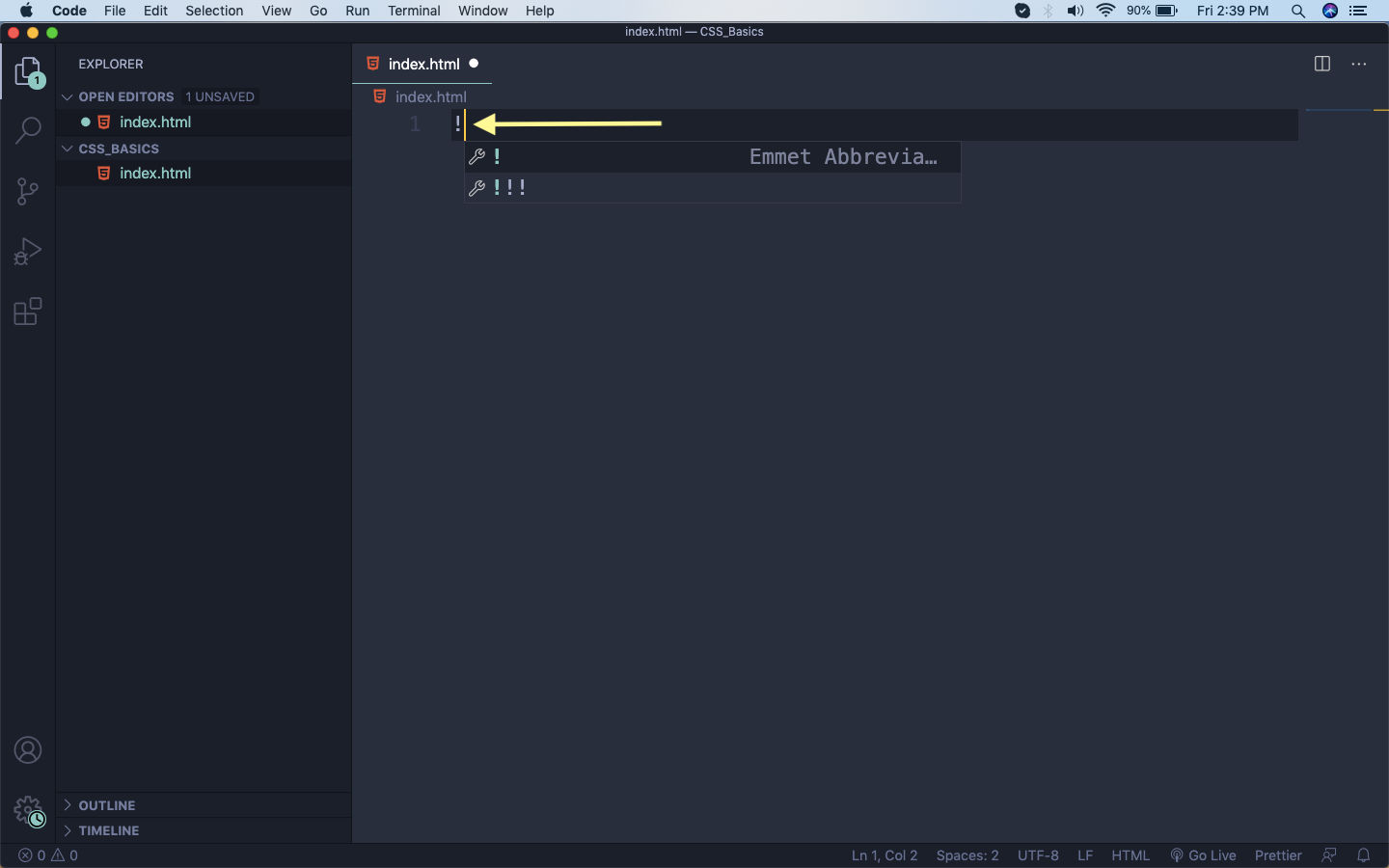 index.html
index.html
And you will get the basic html skeleton.
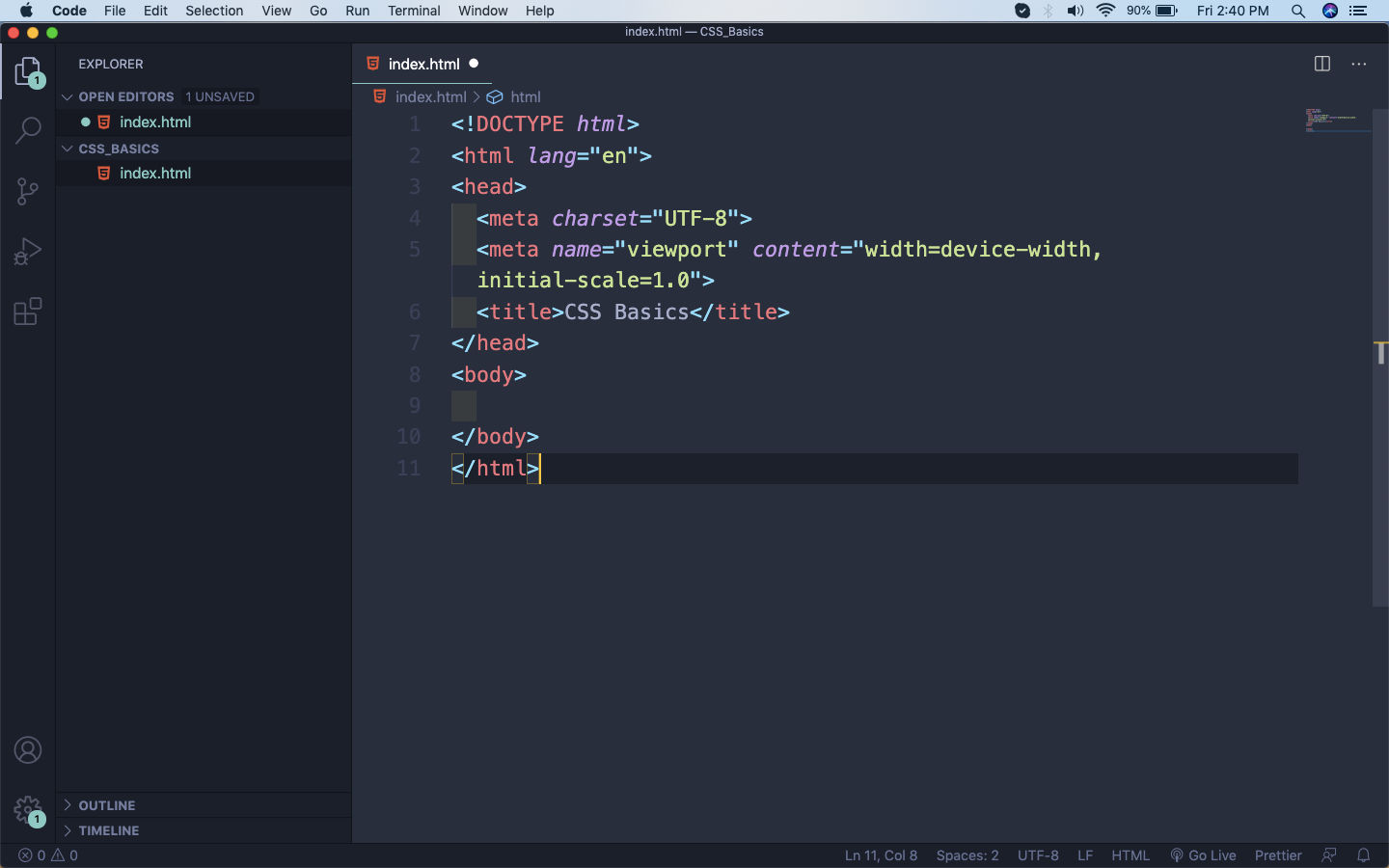 Basic skeleton
Basic skeleton
Now, i can open this html file in a web browser and it will show the content. But with that i had to refresh the browser every-time i make a change. So, as with HTML basics, we will start the Live Server and have the page set to auto-refresh.
Let’s start with our first html code, which is a h1 tag. We are using inline CSS by giving an attribute style and typing the CSS within it.
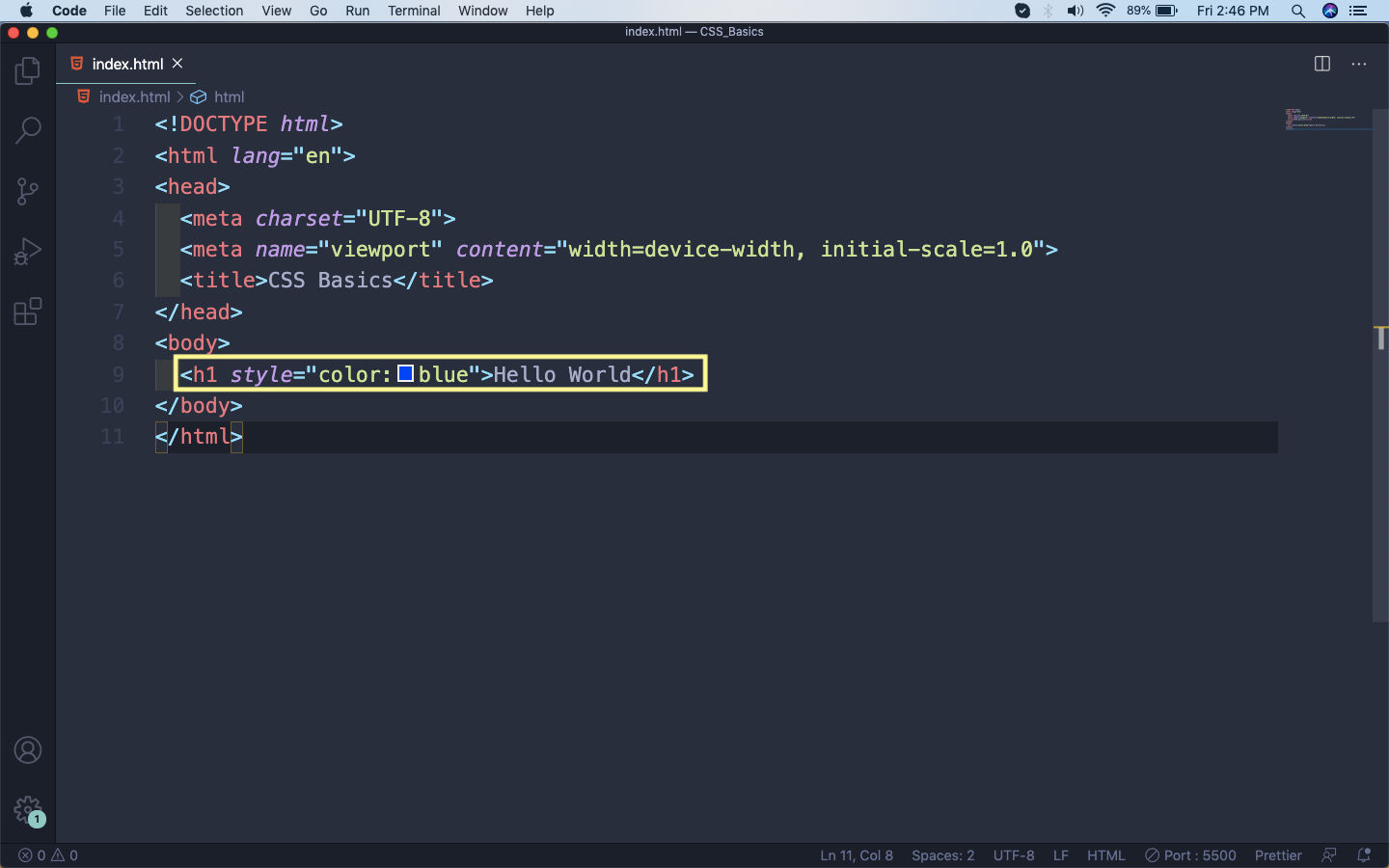 Inline styles
Inline styles
So, this will make the h1 tag blue in our web-browser.
 h1 tag
h1 tag
We will now look at the second way and it is Internal CSS. Here, we are giving styles to the paragraph tag, by targeting it and giving a color brown. For this we are giving it within a <style> tag, within the <head> tag.
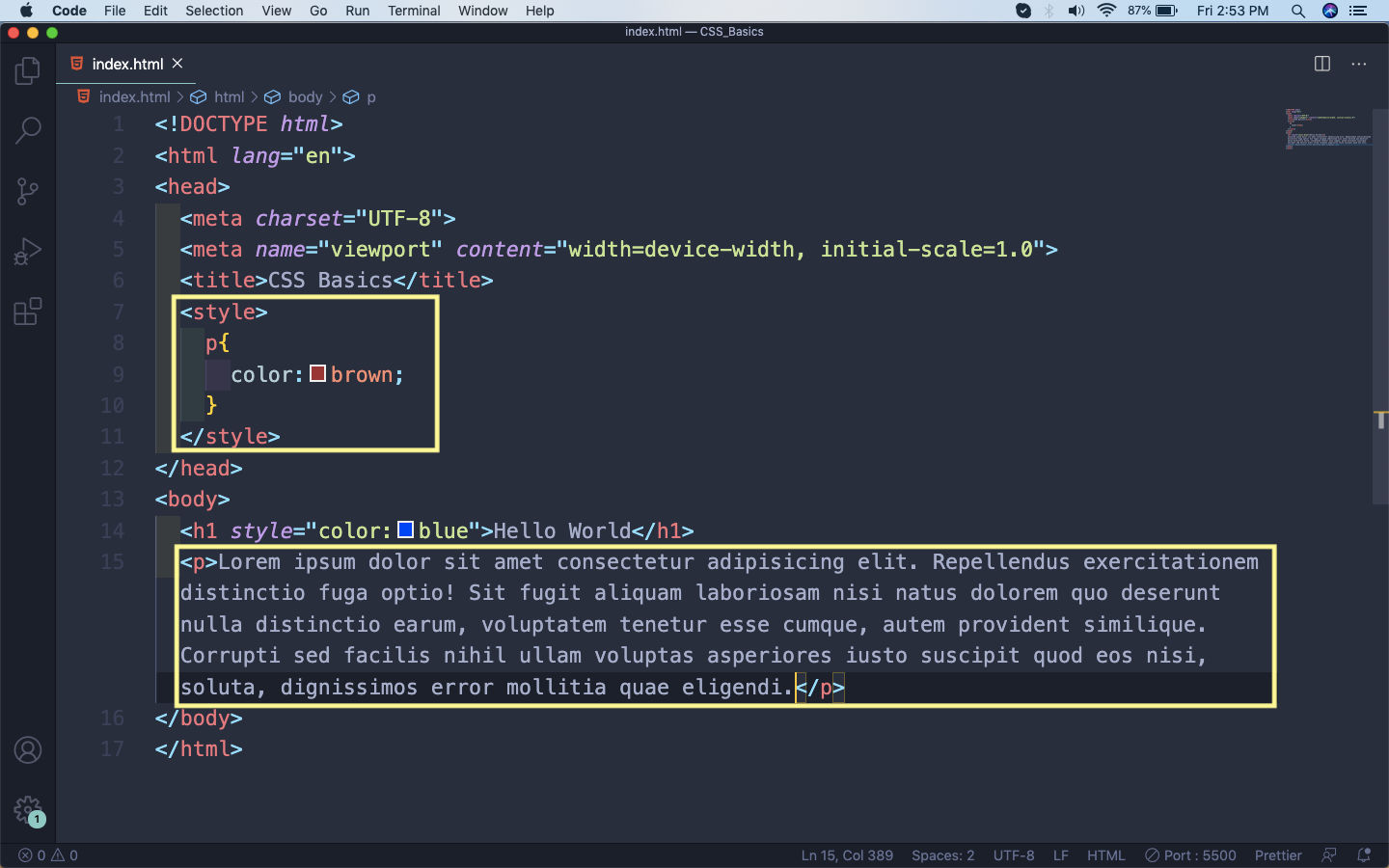 Internal CSS
Internal CSS
Now, we will look at the third and the most preferred way which is external style sheets. So, go ahead and create a file styles.css in the same directory and put the below content in it. We are targeting h3 tag and using three properties in it. We will learn more about them later.
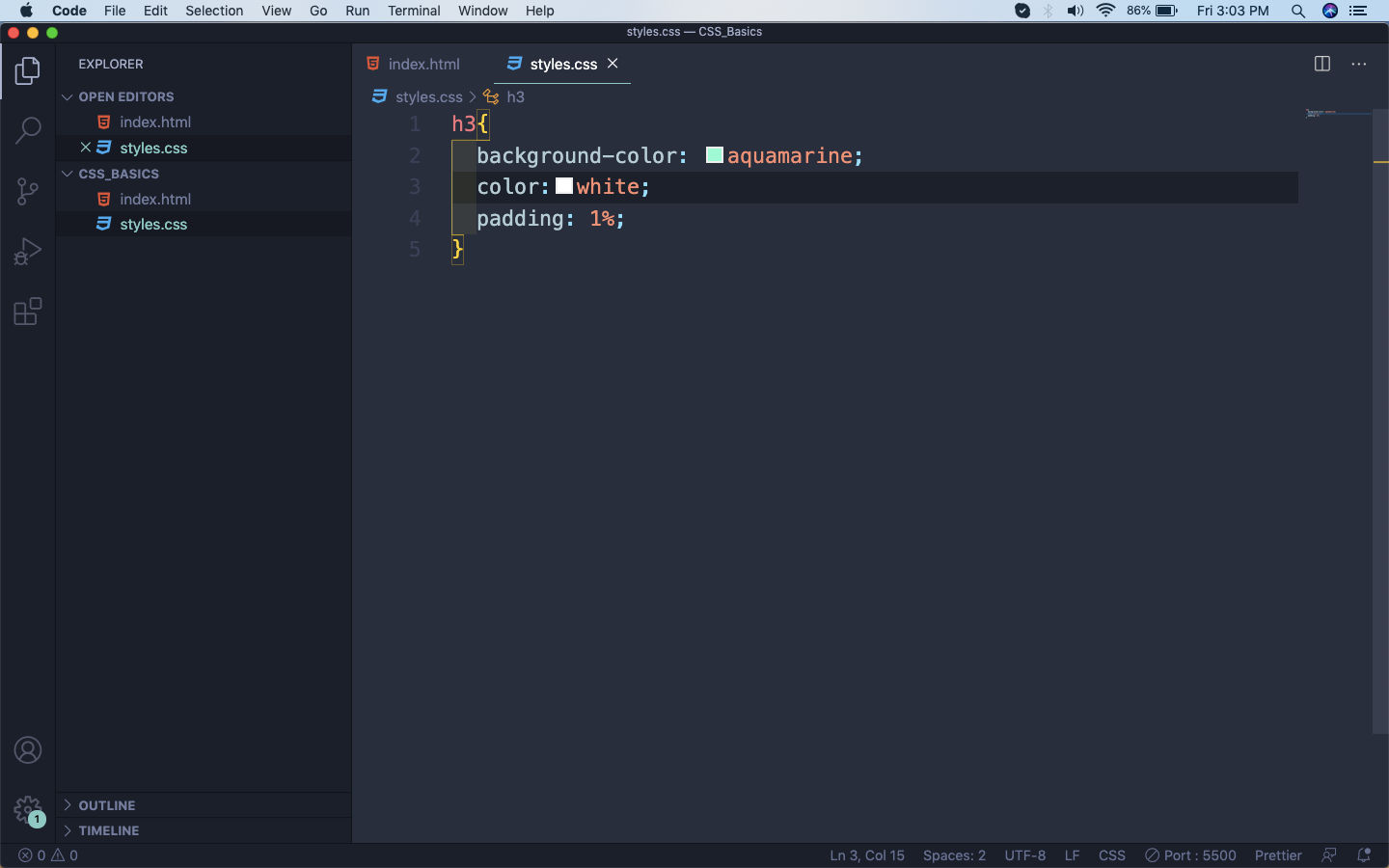 styles.css
styles.css
Now, let’s add the h3 tag in our index.html. Now, to include the stylesheet in our project, we need to use a link tag an include it.
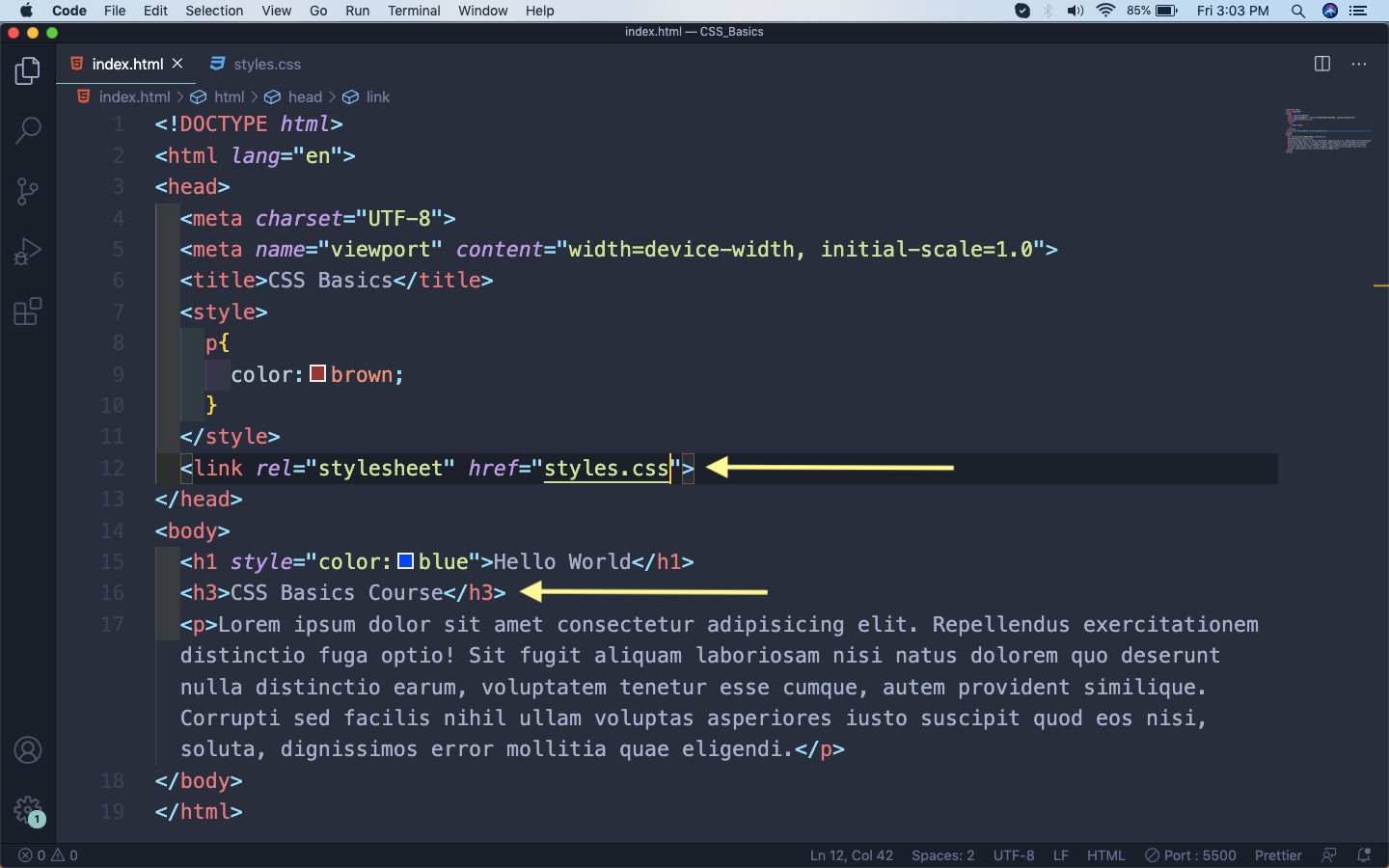 index.html
index.html
Now, it will show the h3 tag with our styles in the browser.

CSS Selectors
Let’s learn about the CSS Selectors now. So, as with the diagram we will first target the selector which can be any tag. Soon, we will learn that we can target classes and ids also.
After that we will write the code for CSS within a pair of curly brackets. In the below diagram we are writing only one property-value pair, but we generally write more then one.
The property is out of hundred properties which CSS have and the value is a unit which can be of different type like em, rem, px or %.
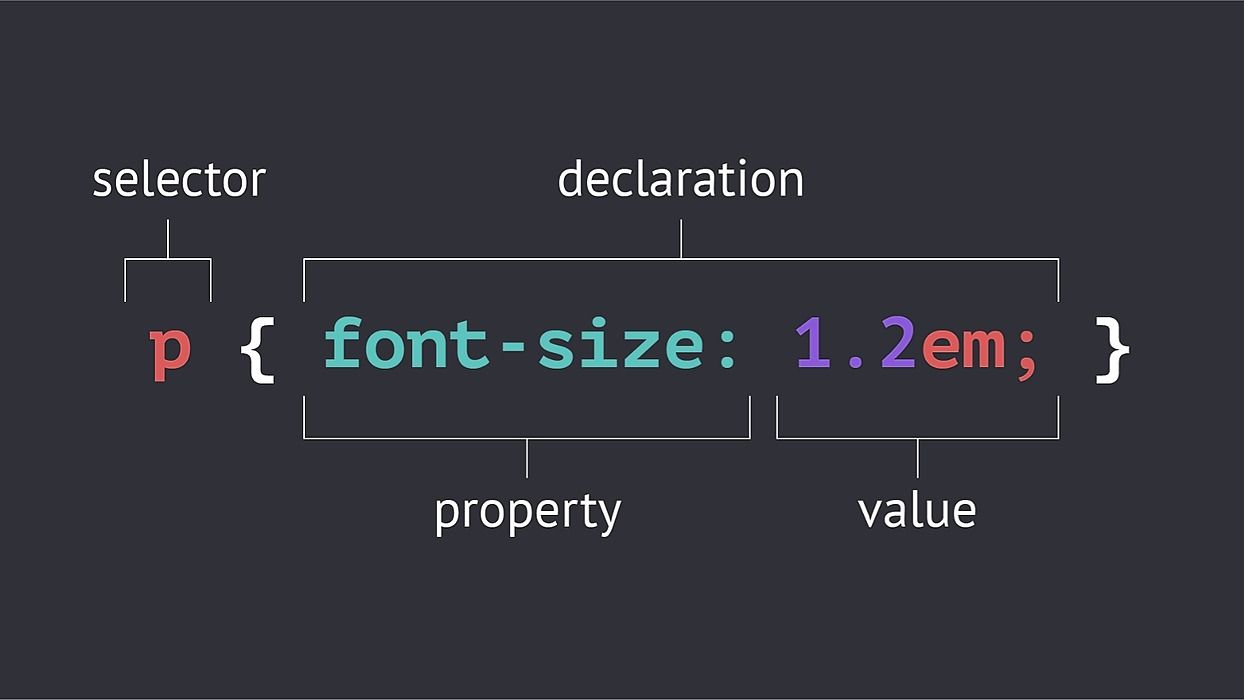 CSS Selector
CSS Selector
So, this completes part-1 of the series.